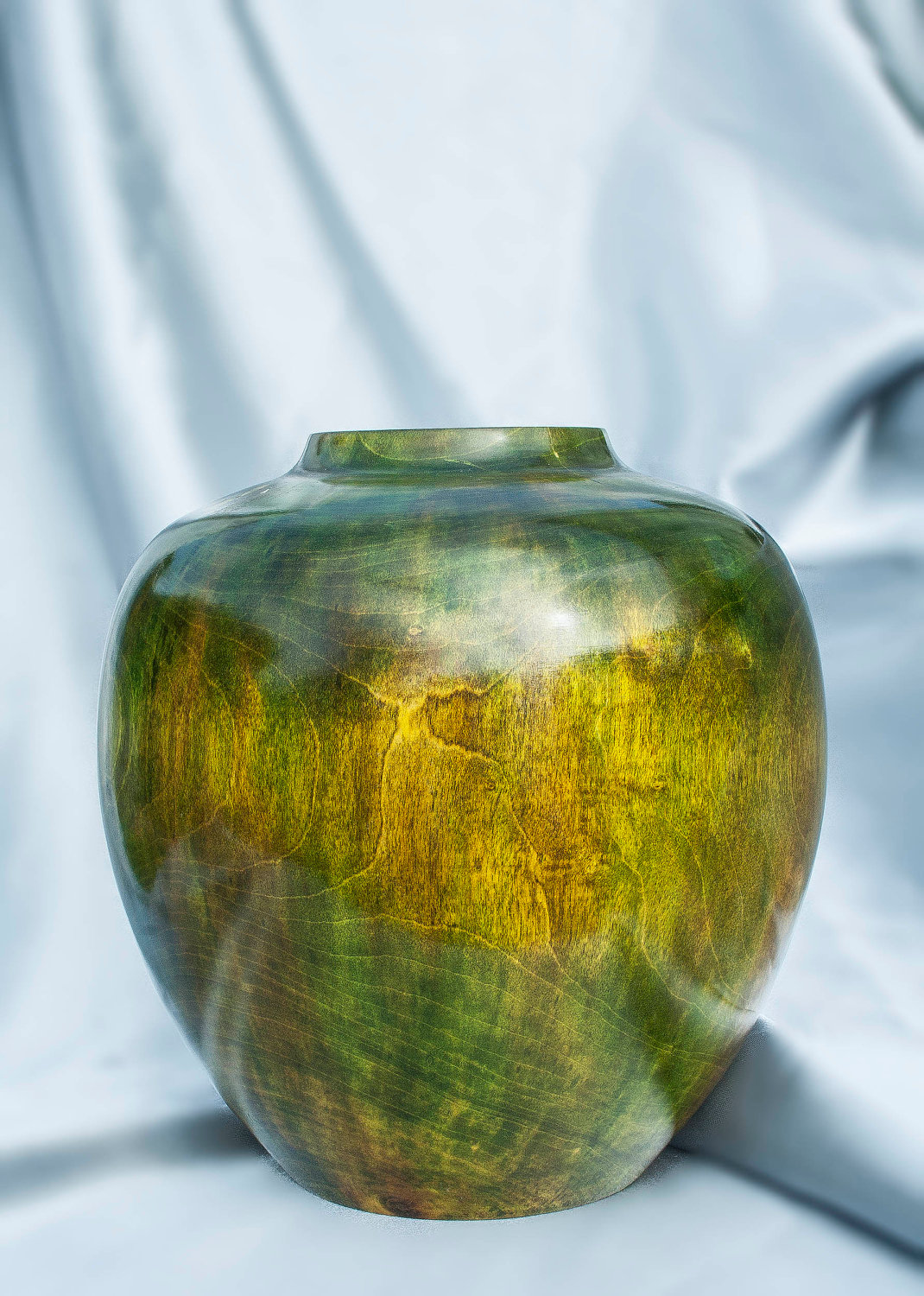Good you're having a go Brian, Chas helped me put together a small pdf file that prints out as a small booklet on the subject of colouring and finishing, if you have not read it, you may find some of it helpful, you can get it from Chas' website under the projects and aids section
here there are two files:
Coloured Work Buffing Guide (Pamphlet PDF 1.43mb)
Colouring Technique (Pamphlet PDF 560kb)
Your best bet with your current piece though, if you have left sanding lines or tear marks in it, will be to aggressively remove them, start with 180 or even 120 if it requires it and check that all scuffs and tears are gone, it isn't always necessary to have the piece spinning to do this, if you have a particularly troublesome spot, lock the lathe up and using a drill mounted pad, sand the area till the tear is gone. Once you have got all the toolmarks etc off the finish, then start to move down through the grits, if you use a power sander then hold it in such a fashion that the part of the pad that is cutting the work is rotating close to a right angle to the direction of the lathe rotation, this helps to avoid any ring scratches, once you get to the 240 grit, once you finish with the power sander or whatever, then sand with the grain by hand to give a very fine finish, do this with the 240, 320 and 400 grit. Check the piece over very carefully by rotating it under a lamp or bright light to spot any obvious scratch marks. If all is clear, then recolour the piece, as you are working with a single colour and a dark one at that you will find this will work perfectly well and you wont spoil the item, the new colouring will easily cover over anything left by the initial colour session.



































